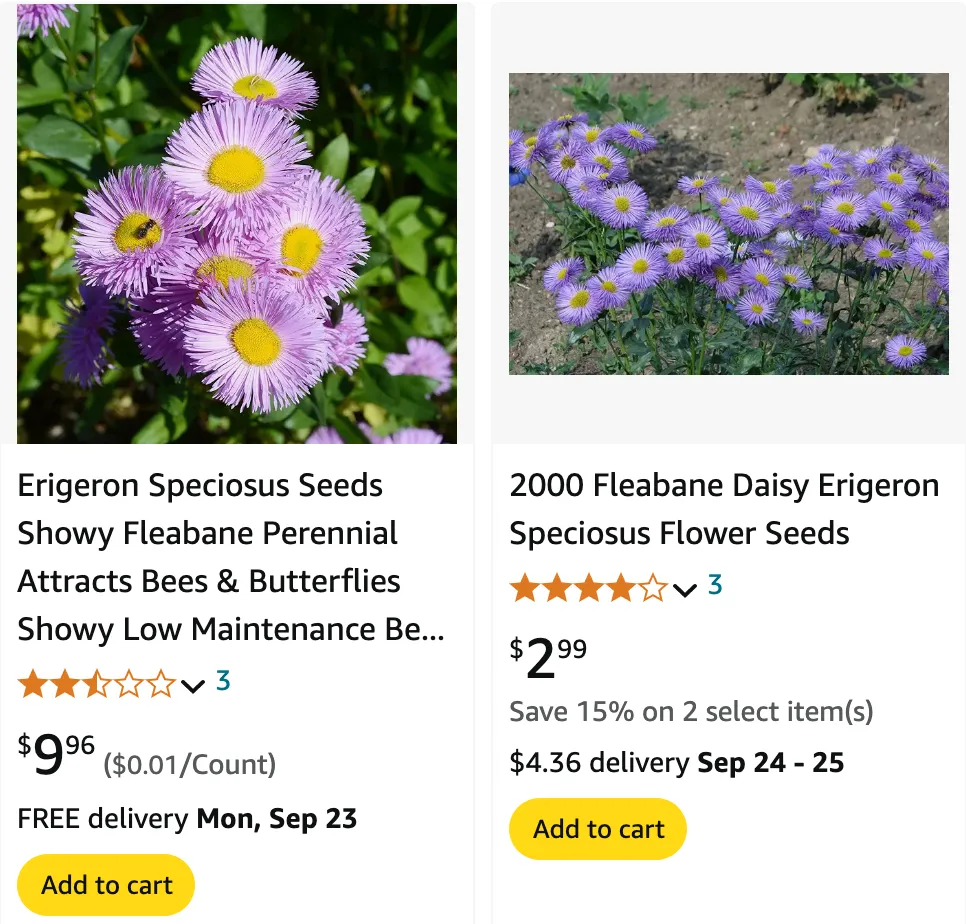
Erigeron Speciosus: FAQs and Insights
As someone deeply immersed in gardening and plant care, I’ve found Erigeron Speciosus, commonly known as the Showy Fleabane, to be a fascinating and resilient plant. If you’re curious about this perennial, I’m here to share everything I’ve learned, from its basic needs to its benefits and potential problems. Here’s a comprehensive FAQ guide on Erigeron Speciosus.
465 Species in Genus Erigeron
What Is Erigeron Speciosus?
Erigeron Speciosus, often referred to as the Showy Fleabane, is a perennial herbaceous plant native to North America. Known for its vibrant purple or blue daisy-like flowers, it blooms from summer into fall, adding a splash of color to gardens. Its attractive, finely textured foliage complements its cheerful flowers, making it a popular choice for ornamental gardens.
How to Care for Erigeron Speciosus?
Caring for Erigeron Speciosus is relatively straightforward. Here’s what you need to know:
- Sunlight: This plant thrives in full sun but can tolerate partial shade. For the best bloom, ensure it receives at least six hours of direct sunlight daily.
- Soil: Well-drained soil is crucial. Erigeron Speciosus prefers slightly sandy or loamy soil. If your soil is heavy clay, amend it with compost to improve drainage.
- Watering: Water the plant regularly but avoid waterlogging. It’s best to let the top inch of soil dry out between waterings. Overwatering can lead to root rot.
- Fertilization: A balanced, all-purpose fertilizer applied in early spring can boost growth and flowering. However, Erigeron Speciosus is quite tolerant of poor soil conditions, so excessive fertilization is usually unnecessary.
- Pruning: Deadheading spent flowers will encourage more blooms and prevent self-seeding if you want to control spreading. Cut back the plant in late fall or early spring to maintain its shape and promote new growth.
How to Propagate Erigeron Speciosus?
Propagating Erigeron Speciosus is an enjoyable process. Here’s how you can do it:
- Seeds: Sow seeds directly into the garden or start them indoors 6-8 weeks before the last frost. Lightly cover the seeds with soil, keep them moist, and they should germinate within 2-3 weeks.
- Division: In early spring or fall, divide established clumps. Carefully dig up the plant, separate it into smaller sections, and replant each section. This method not only propagates the plant but also helps rejuvenate it.
What to Plant With Erigeron Speciosus?
Erigeron Speciosus pairs beautifully with various garden plants. Here are some great companions:
- Coreopsis: Both plants share similar growing conditions and will complement each other’s blooms.
- Echinacea: The contrasting colors of Coneflowers and Showy Fleabane create a vibrant display.
- Salvia: The tall spikes of Salvia provide a lovely backdrop to the low-growing Erigeron Speciosus.
- Grasses: Ornamental grasses like Feather Reed Grass or Blue Fescue add texture and contrast to the softer look of Erigeron Speciosus.
Is Erigeron Speciosus Toxic?
Erigeron Speciosus is not considered toxic to humans or pets. It’s safe to grow in gardens with children and animals. However, as with all plants, it’s best to prevent ingestion of large quantities.
Benefits of Erigeron Speciosus
Erigeron Speciosus offers several benefits:
- Attractive Foliage and Flowers: Its showy blooms and fine foliage add beauty to any garden.
- Pollinator-Friendly: The flowers attract bees, butterflies, and other pollinators, supporting local ecosystems.
- Low Maintenance: Once established, it requires minimal care, making it an excellent choice for busy gardeners.
Common Problems with Erigeron Speciosus
While Erigeron Speciosus is generally robust, it can face a few issues:
- Powdery Mildew: This fungal disease can occur in humid conditions. To manage it, ensure proper spacing for air circulation and avoid overhead watering.
- Spider Mites: These pests can cause leaf discoloration. Regularly check for mites and treat infestations with insecticidal soap if needed.
How Does Erigeron Speciosus Compare with Similar Plants?
When compared to similar plants like Erigeron Karvinskianus (Mexican Fleabane), Erigeron Speciosus stands out for its larger, more vibrant flowers and slightly different growth habits. Erigeron Karvinskianus is more of a groundcover with smaller blooms, whereas Erigeron Speciosus features showier flowers and a more upright growth pattern.
In summary, Erigeron Speciosus is a delightful addition to any garden, offering vibrant color and ease of care. With proper attention to its needs and some thoughtful companion planting, it can be a standout feature in your garden. Happy gardening!
If i die, water my plants!



